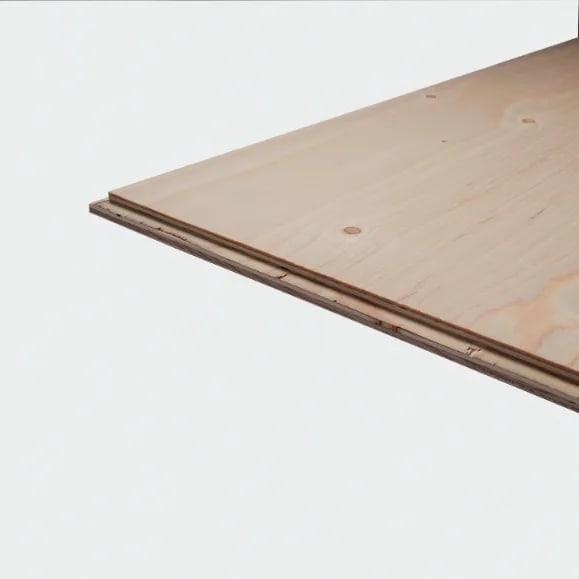Tongue and Groove Plywood
(2 Products)Tongue and groove plywood sheets marry a myriad of structural benefits to satisfy all of your domestic flooring needs- they're stronger and more rigid than regular plywood, help prevent sagging between joists, and reduce "bounce" at the seams between joists. Highly versatile, these boards can be used in a number of ways from creating low-cost kitchen cabinets to providing a rigid subfloor.
What Is Tongue & Groove Plywood?
Tongue and groove plywood sheet comprise a ‘tongue’ edge with a precisely engineered gap ‘groove’.
When installing the boards, this tongue edge slots perfectly into the groove, making the installation process a breeze.
For additional security, the boards can also be glued or bound with screws or nails ( a method often referred to as ‘secret nailing’).
Overall, tongue and groove plywood sheets reduce movement and aid in preventing uneven points in sub-flooring where two ends meet.
Offering extra stability at joints, a T&G profile helps eliminate sagging, making for a rigid subfloor.
Where Is Tongue and Groove Plywood Used?
Softwood T&G plywood flooring panel is specifically designed for use in floor decks and domestic flooring - although it can also be utilised on roofs where a high level of engineering, such as high snow loading, is essential.
Softwood Plywood Tongue and Groove floor panels are purposed to withstand impact and other forms of bruising in flooring situations, site hoarding, roof decking, and vehicle bodywork.
Tongue and Groove Plywood Key Features
- Interlocking edges
- Enhanced stability
- Reduced movement
- Load distribution
- Streamlined installation
- Seamless appearance
- Versatile use
Tongue and Groove Plywood Installation
Tongue and groove plywood installation involves fitting panels together by interlocking the protruding tongue of one panel into the groove of another. This method creates a strong, seamless connection that minimises gaps and ensures structural stability.
Typically used in flooring, roofing, and wall sheathing, tongue and groove plywood offers improved resistance to movement and shifting, making it ideal for high-traffic areas or environments prone to temperature fluctuations.
Proper installation requires precise alignment and secure fastening to achieve a smooth, level surface. Additionally, sealing the joints with adhesive or caulking enhances the plywood's durability and moisture resistance, prolonging its lifespan and maintaining the integrity of the structure.
Frequently Asked Tongue & Groove Plywood Questions
What Is Type of Wood Is Tongue and Groove Plywood Made From?
Plywood is available as a hardwood and softwood product.
Hardwood plywood sheets are typically used for products like furniture and cabinets, while Softwood plywood is generally utilised for construction and industrial purposes.
The trees hardwood are typically sourced from tend to be slower growing, resulting in denser wood.







